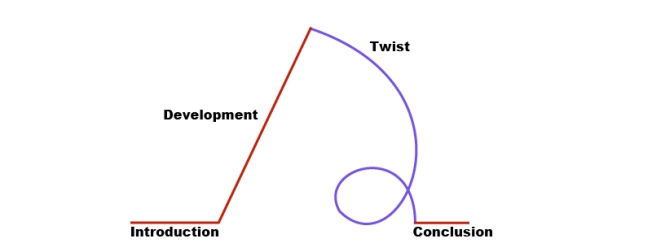This week some friends and I have been posting about badass historical women on social media, because women are often overshadowed despite the fact there’s some seriously awesome role-models out there. So, on that theme, I am delighted to present a guest blog from Lorraine – one of my collaborators on the Read This First anthology – who has a few words to say about writing female role-models.
I spend a great deal of my time driving, which gives me quite a bit of time to think, sing tunelessly in the car and listen to audiobooks. I’m 36, intelligent but have been known to make bad life choices with respect to partners or potential partners. I have good levels of self-confidence and yet I don’t expect men to find me attractive. Last Sunday, I was driving down the A500 and had an epiphany which caused myself to question my life: Am I Cinderella?! I work outside and as a result I am often muddy and feel like I’ve been through a hedge backwards because I actually have been. This means I forego pretty clothes, my nails are a mess, and make-up is for special occasions. Cinderella is only noticed by the prince once she puts on the beautiful dress and the impractical shoes; once she has shed her grubby clothing. So perhaps it is not too far a reach for me to feel a little unattractive in my own practical clothing and to feel surprised when I am noticed by chaps with even one redeeming feature. The fairy tales I grew up with tell me that a beautiful woman won’t be noticed until she dresses and acts like a princess. Why should I be any different?

Be honest, how often do you properly look at the cleaner?
Last February, I was listening to the audiobook Princesses Behaving Badly by Linda Rodriguez McRobbie. She touched upon the phrase “Princess Industrial Complex”, a concept that I had been previously aware of but hadn’t ever put words to. The Princess Industrial Complex most often refers to Disney’s lucrative business of selling all things princess. It started in 2000 after a Disney executive went to a Disney on Ice show and saw little girls wearing home-made outfits. He saw a money-making opportunity and, with very little market research, Disney began selling princess outfits along with whatever else a little princess could hope to have: princess bedding, princess toothpaste, princess lunchboxes. The works. Over 26,000 items that are princess, all pristine and all perfect – and all objects for attainment.
But there’s the rub. Princesses are just that to the princes in their stories: objects of attainment. The core Disney Princesses are Cinderella, Sleeping Beauty, Ariel, Belle, with Jasmine and Snow White trailing. “Ah!” I hear you say. “But what about Mulan?” Sure. Mulan is definitely a Disney princess but her dolls are sold dressed in the clothes of the femininity that she hated. Each of these iconic princesses are portrayed commercially as being wholly feminine and, once their stories are taken into account, sometimes they are also portrayed as being extremely vulnerable. In this context, the beautiful dresses, the impractical shoes and the immaculate make-up become symbols of vulnerability and weakness. The princess’ own hyper-femininity is used against her and, from her point of view, she needs to be rescued. From the prince’s point of view, she can’t rescue herself so he must go and acquire her.
Of course, the word “princess” comes with its own negative connotations. In a modern context, it means a high-maintenance woman who expects to be saved by a man who foots the bill for her princess beauty products. Not that this type of consumer fetishism has ever been pushed as a good thing from a young age. Nope. Not at all. *cough cough* PrincessIndustrialComplex *cough*

Little Miss Vanity Case, sold by French toy maker Janod to girls of 3+ years old
But I digress.
In storytelling, a princess can be a character that is locked away and requires rescue. This is where storytellers, game writers, and even GMs should attempt awareness. If that story is about the rescue of a princess, does that princess have to be female and utterly useless? I find myself often wondering why the princess hasn’t damn well rescued herself; sometimes it’s not possible, but shouldn’t she at least try? Even if that means suffering consequences or doing something terrible? Little rebellions go a long way and when these are not present it’s frustrating and, frankly, a little unbelievable. It removes the princess character from being just a quest item maguffin. It gives her personality and it grants a level of strength to the character.
For all that console games tend to be aimed at a more male audience, some of the best examples I can think of where princessified characters are strong and femininity does not equate to weakness are from the game Borderlands 2. The first princessified character to be saved is male, for a start. Roland is never treated as an object for attainment, is demonstrably badass, and removes himself from being a useless princess by fighting back against his former captors. This sets the tone for equality within the game. There are no princesses here. Characters may need rescue, but they are in no way princesses.

Borderlands 2: no princesses, just pirates
The next character requiring rescue in the story is Angel. Angel may easily be read as a princess as she is helpless against her father, who all but puts her in a tower, and yet she is one of the most powerful characters in the game. This is the perfect princess set-up and it is completely nullified by the gameplay. She continually rebels against her father and she has no save/acquisition option. The players must kill her in order to remove the threat she poses to the planet of Pandora. She is removed from being a princess by the storyteller because princesses are to be saved, not destroyed because they are too powerful. Princesses are weak, after all.
After Angel is killed by the players, Roland is shot by Jack – Angel’s father and all-round baddie. Lilith flies into a physical fury at him but Jack slaps a control collar on her. Even whilst she is collared, she rebels. At the end of the story arc Jack is dying and Lilith gives the players a choice: “You kill him, or I will.” If the players allow her to kill him, she does so using her special abilities, stating “That’s for Roland.” Princesses do not seek revenge. They don’t kill. And they don’t give ultimatums. In this story, the writers rescued the audience from princesses.
The various female characters in Borderlands 2 are written as the equals of any male character in this gameworld. Some may be alluring or play with fluffy bunnies, but under that allure is dangerous wit and business acumen; under those fluffy bunnies lie rigged explosives. Femininity isn’t being weak or helpless. It’s part of being badass.

Tell me she’s not badass. I dare you.
That’s what is galling about the Princess Industrial Complex. It encourages young girls to view their femininity as what makes them beautiful, and as a form of weakness since they can’t possibly save themselves, thereby implying that beauty is weakness. It encourages the thought that they are pretty objects of attainment that shouldn’t get grubby playing in the mud or they won’t be attractive to the opposite sex. And whilst a good flounce in a beautiful dress is fun, why should the wearing of the dress signal the need to be rescued?
There is hope, however. A friend’s daughter is fixated on princess dresses, but this three year old gets it. She is The Princess Jane. She dons her dress and then picks up her sword and runs off to fight the baddies. This is a girl who does not equate femininity with weakness, who recognises that it is more fun and more interesting to be the active player than the passive princess.
These are the women and girls that we need to write about, and now, before the doubt creeps in. Sadly, Princess Jane recently stated that she needed a prince to rescue her. She is learning via the social osmosis of her peers. She still dons that dress and picks up her sword, but with a bit more doubt these days.
Let’s remove that doubt, shall we? Let’s not write princesses. Let’s write people.

Lorraine is an Anglo-American ex-lecturer in Multimedia Technologies who fell off a train platform one day, causing her to have an epiphany. She hated her job. This epiphany then caused her to run away to a field to be an ecologist and she now spends her time in and around sites of infrastructure and construction, looking for amphibians, mammals, noxious plants and interesting fungi, which she then writes technical reports about. When not bothering nature, she engages in playing and running Live Action Role Play events and has an unhealthy interest in folklore.

















